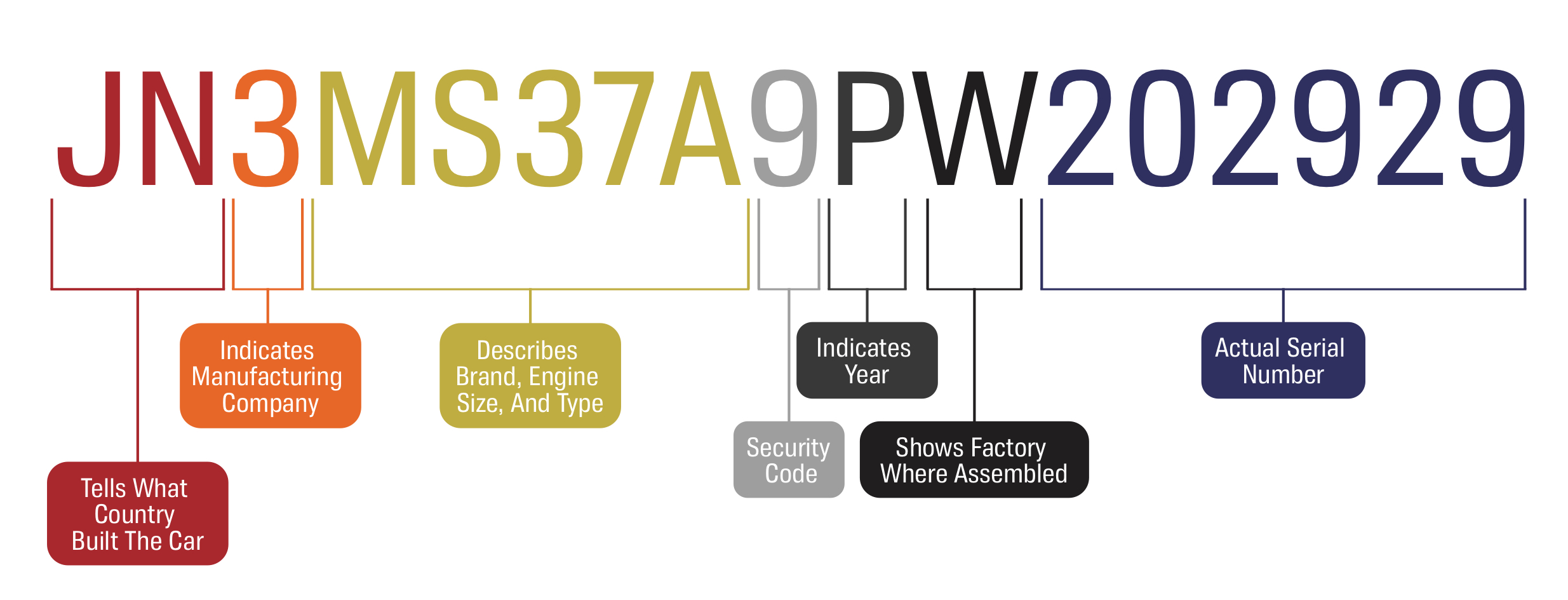Co to jest VIN?
Podczas kupowania lub sprzedawania pojazdu jedną z najważniejszych informacji, które należy znać, jest numer identyfikacyjny pojazdu (VIN). VIN to unikalny kod składający się z 17 znaków, który identyfikuje konkretny pojazd. Każdy VIN jest unikalny dla pojazdu, do którego jest przypisany i może dostarczyć mnóstwa informacji o historii pojazdu.

Numer VIN zazwyczaj znajduje się na desce rozdzielczej pojazdu, w pobliżu przedniej szyby lub na słupku drzwi kierowcy. Jest również wydrukowany na dokumentach rejestracyjnych i ubezpieczeniowych pojazdu. Numer VIN składa się z kombinacji liter i cyfr, przy czym każdy znak reprezentuje określone informacje o pojeździe.

Pierwsze trzy znaki numeru VIN wskazują producenta i kraj pochodzenia. Znaki od czwartego do ósmego podają informacje o modelu pojazdu, pojemności silnika i innych cechach. Dziewiąty znak to cyfra kontrolna, która weryfikuje ważność numeru VIN. Dziesiąty znak oznacza rok modelowy, a jedenasty znak oznacza zakład, w którym pojazd został wyprodukowany.
Ostatnie sześć znaków numeru VIN to numer seryjny pojazdu, który stanowi unikalny identyfikator każdego pojazdu wyprodukowanego przez producenta. Numer ten służy do śledzenia historii produkcji i sprzedaży pojazdu, a także jego historii własności i wypadków.
Numer VIN może być użyty do ustalenia wielu ważnych szczegółów dotyczących pojazdu, w tym jego marki i modelu, typu silnika, typu skrzyni biegów i poziomu wyposażenia. Może również dostarczyć informacji o historii wypadków i konserwacji pojazdu, w tym o tym, czy kiedykolwiek został odzyskany lub odbudowany.
Oprócz dostarczania ważnych informacji o historii pojazdu, numer VIN jest również używany do zapobiegania oszustwom i kradzieżom. Ponieważ każdy numer VIN jest unikalny, przestępcom trudno jest podrobić lub zmienić numer VIN skradzionego pojazdu. Funkcjonariusze organów ścigania mogą używać numeru VIN do identyfikowania skradzionych pojazdów i zwracania ich prawowitym właścicielom.
W ostatnich latach wzrosło zainteresowanie wykorzystaniem numeru VIN do śledzenia emisji spalin i efektywności paliwowej pojazdów. Dzięki wykorzystaniu numeru VIN do śledzenia tych wskaźników organy regulacyjne mogą zapewnić, że pojazdy spełniają normy emisji spalin i efektywności paliwowej, a producenci mogą monitorować wydajność swoich pojazdów w czasie.
Ogólnie rzecz biorąc, numer identyfikacyjny pojazdu jest kluczową informacją dla każdego kupującego lub sprzedającego pojazd. Zapewniając ważne szczegóły dotyczące historii pojazdu, VIN może pomóc kupującym podejmować świadome decyzje i unikać potencjalnych oszustw. Jest to również ważne narzędzie dla organów ścigania i regulatorów do śledzenia i monitorowania bezpieczeństwa pojazdów i norm emisji.

